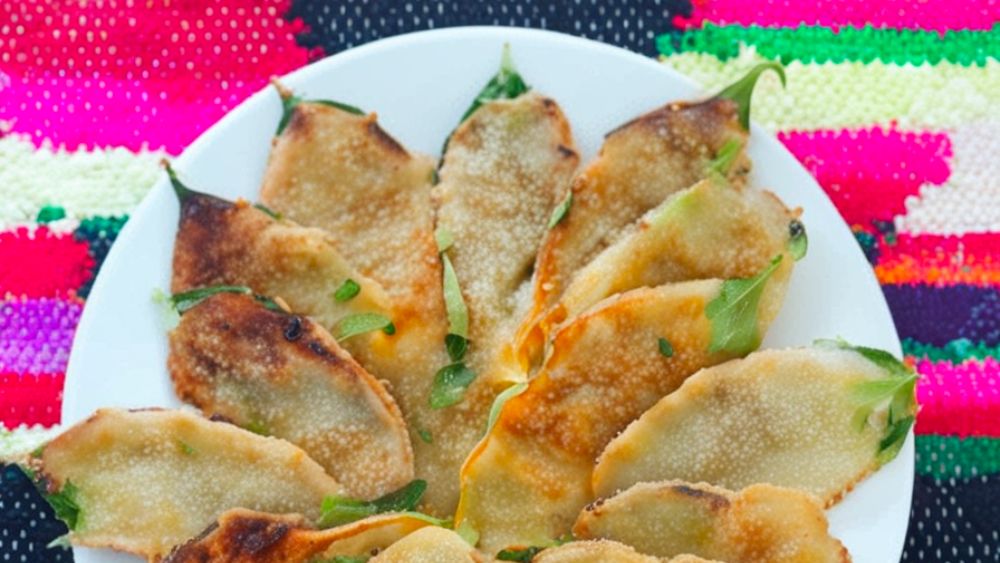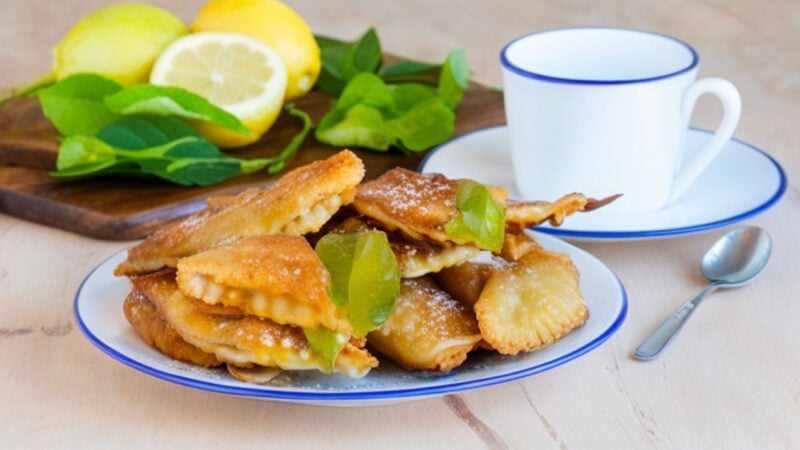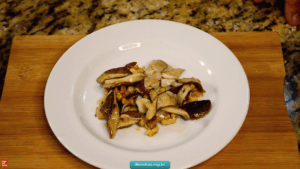
Hello dear friends of Paulina KitchenWe hope you are enjoying the weekend, eating delicious things and wanting to cook something special. Because today we have a super special recipe, a delight from the region of Murcia, Spain: Paparajote.
Papara what? Don’t be scared, as strange as its name sounds, this recipe is very easy, since it is prepared with the mixture of the dough for frittersbut it has a very particular detail: inside it has a lemon leaf that gives it an incredible flavor and an aroma that perfumes the entire house when cooking them.
On this occasion we want to talk about where paparajotes emergehow to prepare them, how to accompany them, and some tips to make them perfect. We will also answer the million dollar question, Should you eat lemon tree leaves or not?
About the paparajote
Paparajote is a typical dessert of the Murcia region, SpainIt is a delicious mix of ingredients that, when fried, acquire a crispy texture on the outside and soft on the inside.
- The most interesting and unusual thing about this recipe is that it uses a lemon leaf to wrap it, which gives it a characteristic aroma and flavor.
In Murcian gastronomy, this dessert is enjoyed on various occasions. It is common to find it in local festivitiesas in the parties of Holy Week or CarnivalIt is also a common choice in restaurants and bars in the region, where it is served as a dessert or as an accompaniment to coffee.
The origin of the paparajote recipe
The tradition of eating paparajotes in Murcia dates back to ancient times, like all good recipes. The story behind this tradition tells that the ArabsDuring their rule of the Iberian Peninsula, they introduced the cultivation of lemon trees in the Murcia area.
- Over time, the Murcians discovered that the lemon tree leaves They had a special flavour and people started using them in their cooking. Years later we want to thank them for this great idea.
The recipe for paparajotes It has been passed down from generation to generation and has become an emblematic sweet of the region. These are appreciated for their citrus flavorand are part of the gastronomic heritage of Murcia, being a symbol of local culinary identity.
How to eat the classic paparajote
To enjoy this dessert, it is important to know how to eat correctly. It’s really simple, first you’ll need to pull one tip with care for remove the lemon tree leafexposing the interior. Then you can enjoy the great combination of flavors and textures.
At the time of serve the paparajote It is common to do it in the form of dessert accompanied by a scoop of cream or vanilla ice cream, pastry cream or sprinkled with icing sugar. It can also be enjoyed with a cup of hot coffee or tea. The contrast between the sweetness of the paparajote and the freshness of the lemon creates a unique combination of flavors.
One of the frequently asked questions about this recipe is whether the leaves are edible. The answer is no, Lemon tree leaves are not eatenThey serve as a wrapper to protect and flavor the paparajote during cooking, but they are not edible.
What ingredients does paparajote contain?
The preparation of the dessert requires simple ingredientsThe ingredients are mixed until a homogeneous mass is obtained.
- It uses flour, egg, sugar, milk, lemon zest and, of course, lemon tree leaves.
Then the paparajote is dipped in the dough and fried in oil heat until it turns golden brown. The end result is similar to that of fritterbut with the citrus touch of the lemon tree.
Tips and tricks for making the best Murcian paparajotes
- Choosing fresh lemon tree leaves: The leaves should be flexible and have a citrus aroma pleasant.
- Prepare a soft and homogeneous dough: When mixing the ingredients for the dough, it should be a smooth and homogeneous consistency. Avoid over-beating the mixture so that the result does not become heavy.
- Let the dough rest: The dough always takes on a better consistency when left to rest for half an hour.
- Checking the oil temperature: To obtain a crispy paparajote and well cooked, it is important to control the temperature of the oil. The oil should be hot but not too hot, around 180°C.
- Drain excess oil: After frying the paparajotes, place them on absorbent paper to remove excess fat. This will help maintain their crispy texture.
Can I prepare paparajote if I live outside of Murcia?
Although this is a traditional recipe from the Murcia region, it is possible to prepare it anywhere in the world, since the ingredients needed to make paparajotesuch as flour, eggs, sugar, milk and lemon zest, can be obtained everywhere.
The only special consideration is to find fresh lemon tree leavesas these give it its distinctive flavour. If you have a lemon tree in your garden or your grandmother or neighbour’s lemon tree, you can ask for some leaves.
You can also find them in specialty stores or even in local markets. If you can’t find lemon tree leaves, you can use them leaves of lima or another type of citrus and add a special flavor to your dessert.
Follow me on Instagram (here)
And on YouTube I upload new recipes every week (click here)
Murcian paparajote recipe
Yields: 8 servings
Preparation time: 30 minutes
Ingredients
- Fresh lemon tree leaves
- 200 g of 0000 flour
- 2 eggs
- 100 g of sugar
- 250 ml of milk
- Zest of 1 lemon
- Vegetable or olive oil for frying
Preparation
- In a bowl, mix the sifted flour, eggs, sugar, milk and lemon zest and beat until you obtain a homogeneous dough. Leave the dough to rest for about 30 minutes, if possible.
- Heat plenty of oil in a frying pan over medium-high heat.
- Take a lemon leaf and dip it into the batter, covering it completely.
- Place the sheet with the dough in the hot oil and fry until golden brown on both sides.
- Remove the paparajote from the oil and place it on absorbent paper to remove excess oil. Repeat the process with the rest of the leaves and the dough.
- Serve on a plate accompanied by ice cream, pastry cream or sprinkled with icing sugar.

Source: www.paulinacocina.net


